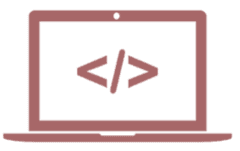Reinforcement Learning (RL) is a type of machine learning where an agent learns to make decisions by interacting with an environment to maximise cumulative rewards. It is widely used in robotics, game playing, finance, and autonomous systems.
Key Components of RL
- Agent – The learner or decision-maker.
- Environment – The system the agent interacts with.
- State (S) – A representation of the current situation.
- Action (A) – The choices available to the agent.
- Reward (R) – Feedback signal for the taken action.
- Policy (π) – Strategy for selecting actions.
- Value Function (V) – Expected long-term return for a state.
- Q-Value (Q) – Expected return for a state-action pair.
3. Types of RL Architectures
- Model-Free RL
- The agent does not have a model of the environment.
- Example algorithms: Q-Learning, Deep Q-Network (DQN), Policy Gradient.
- Model-Based RL
- The agent builds or uses a model to simulate the environment.
- Example: AlphaGo uses a model to predict future game states.
4. Types of Learning in RL
- Value-Based RL
- Learns value functions like V(s) or Q(s,a).
- Example: Q-Learning, DQN.
- Policy-Based RL
- Directly optimises the policy without learning value functions.
- Example: Policy Gradient Methods, REINFORCE.
- Actor-Critic RL
- A hybrid approach combining value-based and policy-based methods.
- Example: Advantage Actor-Critic (A2C), Proximal Policy Optimisation (PPO).
5. RL Optimization Techniques
- Exploration vs. Exploitation: Balance between trying new actions (exploration) and choosing the best-known action (exploitation).
- Discount Factor (γ\gammaγ): Determines the importance of future rewards.
- Experience Replay: Stores past experiences to train more efficiently (used in DQN).
- Temporal Difference (TD) Learning: Updates value estimates based on future rewards.
6. Real-World Applications
- Robotics: Training robots to walk, grasp objects.
- Gaming: AlphaGo, OpenAI Five for Dota 2.
- Autonomous Vehicles: Self-driving cars learning from simulations.
- Healthcare: Drug discovery, treatment optimization.
- Finance: Stock market trading strategies.
7. Mathematical Formulation
Reinforcement Learning is modeled as a Markov Decision Process (MDP) defined by the tuple (S,A,P,R,γ), where:
- S = Set of states
- A = Set of actions
- P(s′∣s,a) = Probability of transitioning from state sss to s′s’s′ after taking action aaa
- R(s,a) = Reward function
- γ = Discount factor (0≤γ≤10 \leq \gamma \leq 10≤γ≤1)
8. Bellman Equation
The value function V(s) is defined as:
V(s)=E[R(s,a)+γV(s′)]
For Q-values:
Q(s,a)=R(s,a)+γ∑s′P(s′∣s,a)maxa′Q(s′,a′)
